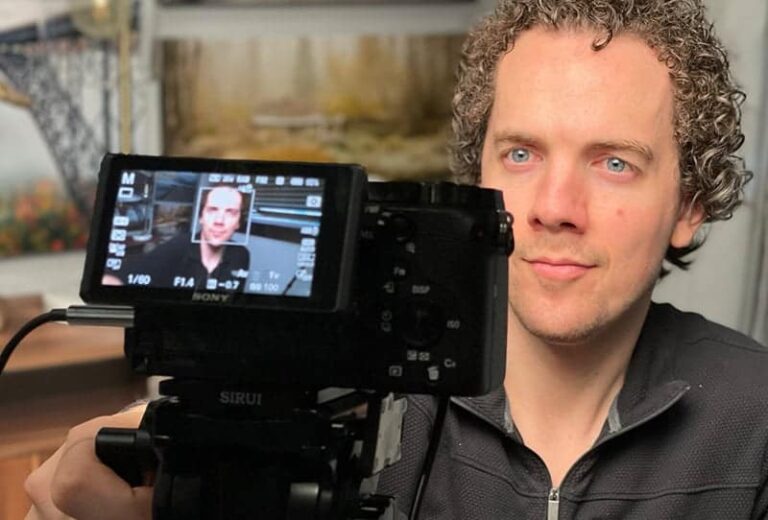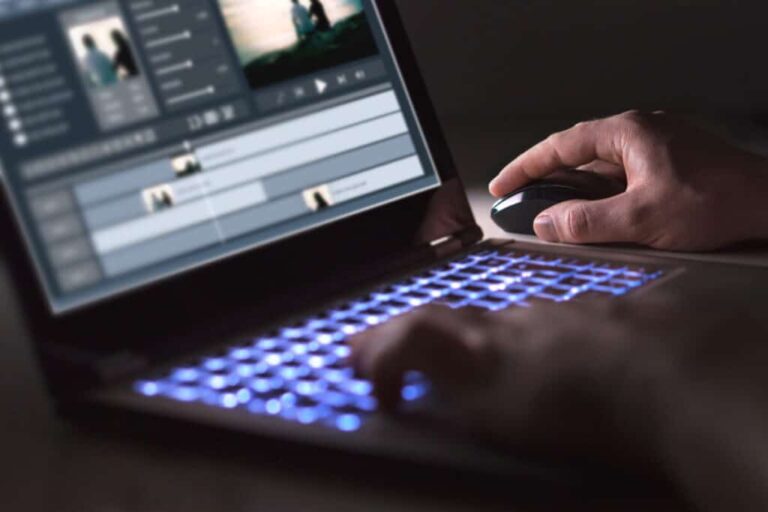Many people nowadays find YouTube to be the supreme spot of entertainment and information. And there are many others who would like to be YouTubers and create videos for everyone to see and like, but how do you get started?
To make a YouTube video, a person must find a topic that interests them and will interest or inform an audience. The second step would be to film the video, then use video software to edit the film that was recorded. Finally, once the video is edited, it must be exported and uploaded to YouTube.
These steps may sound simple, and they might be, but there is a whole lot more to creating YouTube videos than simply making a video and uploading it. This topic requires a lot more detail and information in order to cover all of these steps.
Step One: Choose the Topic
Choosing a topic may sound simple, but everyone has had that experience when a teacher has asked their students to pick a topic for a paper, and the students’ minds go blank.
However, finding a topic to make a video about may be much easier than finding a topic for any essay. The topic should be something that sparks interest in the viewer, but more importantly, sparks interest in the creator of the video. Any good video is made by people who loved learning about their topic and creating an entire video about that particular topic.
Usually, when people make a video, they already have something in mind and are already heading to step two. But, if finding a topic is still a struggle, there are a few ways to find inspiration.
1.) Look in the comments of other videos that have been previously made, or look in the comments in videos that interest you to find ideas for a video you could make. Another tactic to find ideas similar to this is to ask the intended audience what they would like to see. They will always have ideas on what videos could be done. Many YouTube artists/creators like to ask their viewers what they would want to see, and the audience is more than happy to put in their opinion. And very often, those YouTube artists will do exactly as was requested.
2.) Find inspiration by bouncing ideas off friends and family. This can be done either in person or on other social media platforms, like Instagram and Facebook. These people know you best and probably know what would be a good idea for your sake, but they also have ideas for videos that they would like to see as well. Friends and family are easy go-to’s for inspiration.
3.) Choose a topic that is easy to find on YouTube itself, or look up any ideas on the internet from articles and blogs. Write down those things that sound interesting and fun to do. Keep in mind as well about those videos that interest you as an audience member and viewer. Writing these ideas and thoughts on paper could help roll around ideas inside your head, and you could potentially come up with other ideas as well that weren’t thought of before.
Make sure to have fun during this process!
Once the topic is chosen, keep in mind the audience that the video will be presented to. It may be recommended to have a particular audience in mind when creating any video because when there is an intended audience, the format or presentation of the video changes a little. This is because there are certain people that are being taught particular content they are interested in, and they want to learn as much as they can.
For example, if you are creating a music video, the intended audience may be people who like Pop music. Or if it’s about homemaking, the intended audience may be stay-at-home parents.
Step Two: Planning
With the topic at hand, the next step is to plan how to present the topic. To do this, there are two things that have to be done:
- Research the topic
- Write out a script
The research part of the planning process shouldn’t be miserable. That means that the topic that had just been chosen, is not interesting or fun enough for the creator. Remember, this is a topic that was happily and willingly chosen, so the research for this should be exciting. While doing the research and preparing content, the creator should know the topic very well and should have done thorough research.
And then, they should get creative with it. Finding fun ways to implement the creator’s knowledge will make the video better, and people will be more willing to watch it for two reasons. First, the research is amazing and very thorough. The creator took the time to explain and was clearly interested in the topic. Second, the creator had fun with the topic and made the video more interesting and creative, which tells the viewer that this YouTuber knows exactly what they’re doing. They presented the content with confidence and ease, and they believe what YouTube has taught them.
After the research part is done, next is scriptwriting. The script is a rough draft of what will/might be said. Throughout the planning, and even through the filming, there are going to be changes made. Writing the script will help the creator know what to say and when to say it. The script can also be used during the editing process so the creator knows when to put certain parts in the video.
Another thing to keep in mind at this point is planning the title of the video. It should be short, and it should be clear to the audience what the video is about.
Step Three: Film
After you have done the research, written your script, and have been thinking about a title, now it’s time to start filming.
What most people try to do when creating a video for the first time is to make the whole filming process perfect. That is impossible. You will mess up on the first go-around, but that’s okay!
The first goal while filming is to have fun. The second goal is to have as much film about the topic so there is enough to edit with. Making mistakes is part of the process, and sometimes mistakes can be really funny. Besides, if there are parts of the film that are not good, they can be edited out later.
Before you begin filming you will need to gather and set up some equipment. These essential equipment parts are:
- Camera
- Mic
- Lighting
- Tripod
- Storage
The camera could be a regular camera, or it could be a webcam on a computer or a screen recorder. It would be advised to have two different sets of recording equipment, just in case. A mic is needed to catch the audio and catch it that makes it easier to hear the creator’s voice.
The lighting equipment could really just be normal light. You will just have to get creative. If there isn’t handmade equipment for lighting, it would be best to learn and understand how light works when filming. The tripod will be needed to hold the camera still and be easy to transport the camera if you are moving around. Storage is also highly necessary for the camera and any devices that will be used for editing.
Keep in mind that the equipment stated above is for beginners who are trying to get used to filming and the YouTube process. If beginners just begin with basic equipment, they will eventually learn and use more advanced equipment once they’ve mastered the beginning.
Something that is highly suggested is to understand the equipment and how it is used. The best way to do this is to play around with it. Use the mic a few times to record silly songs and make sure the audio works. Use the camera and learn the lighting that is best for filming and its features for different kinds of film one might want to consider in the future.
Step Four: Edit
There is one very important thing about the editing process: video editing software.
Video editing software is imperative. If there is no editing software, the video cannot be edited, and it will make exporting and uploading the video much harder than it needs to be.
Editing can be a lot of fun, and to some, it’s their favorite part of the entire video-making process. This is where the video comes together and where a lot of different effects can come into play, such as:
- Music
- Transitions
- Titles
With music, make sure it doesn’t cover the sound of the speaker’s voice and what they’re trying to say. It should be soft and obviously in the background. It should not be a distraction to the viewer.
Transitions are the same. There shouldn’t be so many or too crazy transitions that it becomes a distraction to the video.
With the titles, make them easy and clear to read. They can still be fun, but viewers like it best when it’s clear, easy to see, and is up there long enough to make it easy to read.
The actual editing of the film can be a tedious process because there is a lot of cutting and placing of the short clips. However, this is a necessary process, because as humans, we make mistakes, and there will be parts of the film that won’t make sense or are completely unrelated to the topic. Those parts should be cut out. Any relevant clips should be carefully considered and placed during the editing process.
Step Five: Export and Upload
If you as a creator are wondering how exactly to export and upload videos to YouTube, YouTube actually has a page that tells people exactly what the recommended upload settings are.
The steps to export and upload are the following:
If the creator of the video does not have a YouTube account, that should be the first thing to do before exporting and uploading any videos. Once logged into the account, click on the upload icon. It’s the picture of a camera with a plus sign on it, and it will bring up two options: Upload Video or Go Live. Choose the Upload Video option.
Once that has been chosen, the files on the computer will open. Then, find your video, click on it, and then click Open.
After or during uploading, there will be a box below that tells the creator where to put the title of the video and the description. One tip for the title: do not create a title over 60 characters or else the title of the video will be cut off.
The description part is where timestamps and chapters could be added and any other notes that can be included. However, that the description part is completely optional.
Next would be picking the thumbnail of your choice and setting it as your video’s thumbnail. Thumbnails are extremely important because this is the first thing a viewer sees as they’re scrolling through videos. Make it eye-catching, but not too obnoxious or in-your-face. The final step is then to hit publish! Once it finishes processing, of course.
Tips On Making Videos
Tip One: Make sure the surrounding area that may be filmed is clean. This might include the desk, recording studio, room, the entire house… just whatever is being filmed has to look nice. Viewers appreciate clean spaces and not dirty messes because messes are more distracting.
Tip Two: Dress nice while filming. When dressed appropriately, viewers will be more comfortable watching the video, and they will seriously think about what is said in the video.
Tip Three: When planning a video, plan it with a purpose. When videos are created not just with excitement, but also with intent, this makes viewers more interested in what is said and done in the video.
Tip Four: During filming, speak loudly and clearly to the camera, so the audience understands what is being said. This may be uncomfortable at first, but most likely, if it feels uncomfortable, or even stupid, you’re doing it right.
Tip Five: Have fun!
Error processing API data.




